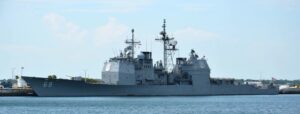
The House Armed Services Committee’s (HASC) Seapower and Projection Forces subcommittee mark proposal for the Fiscal Year 2023 National Defense Authorization Act (NDAA) recommends the full committee approve the Navy’s request for eight new ships while also saving at least five of 24 ships the service wants to decommission in FY ‘23 and sets a floor for maintaining at least 31 amphibious ships. The mark recommends the committee approve the Navy’s FY ‘23 request for two Virginia-class attack submarines (SSNs);…

 By
By 











